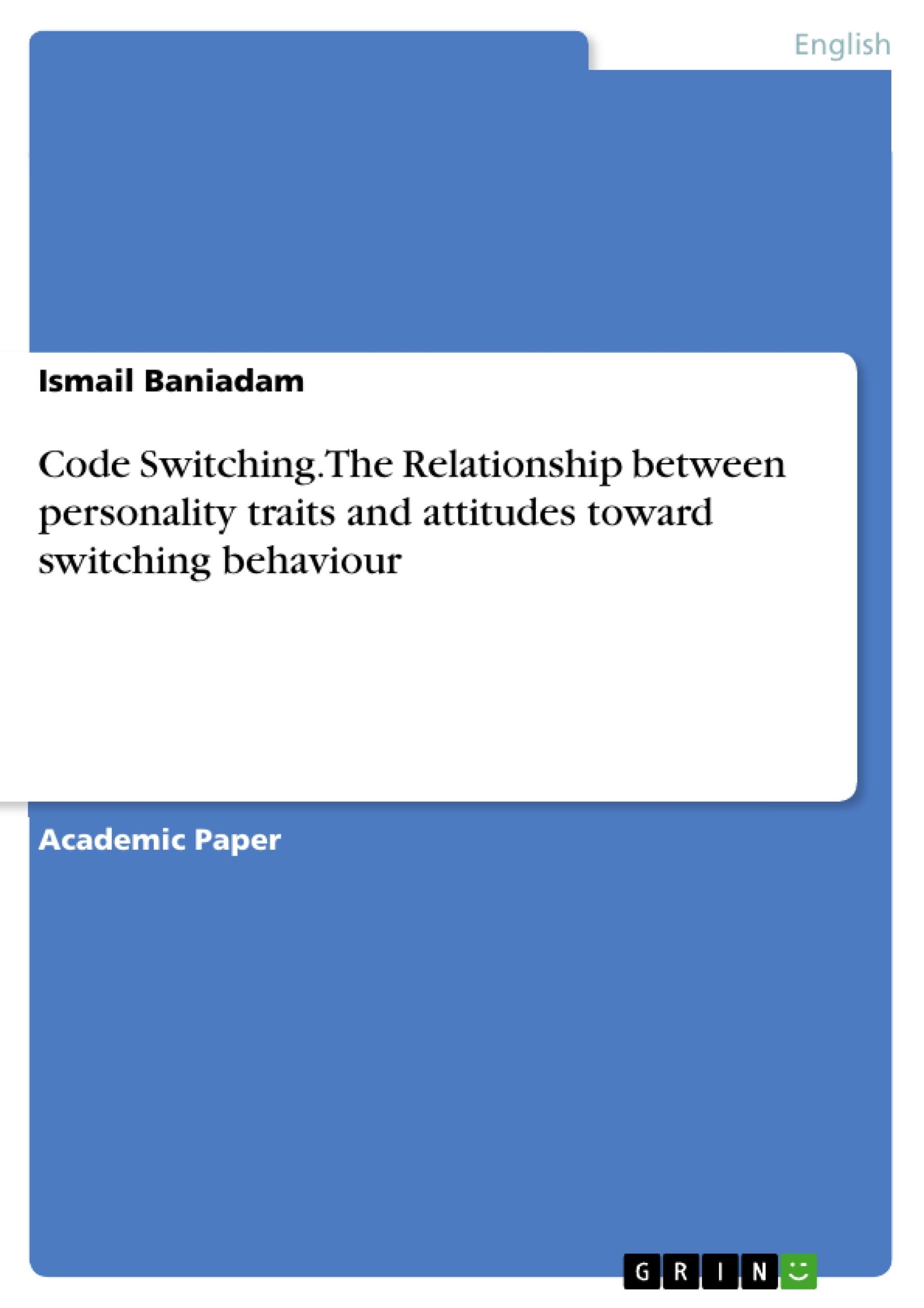The purpose of this study is to investigate the relationship between MA English students’ personality traits (PT) and their attitudes toward university teachers’ code switching (CS) in Urmia, Iran. In addition to that purpose, the correlation between each sub-scale of PT, including extraversion, agreeableness, conscientiousness, neuroticism, and openness to experience, and teachers’ CS is analyzed. Finally, the overall attitudes of MA TEFL English students toward CS behavior are discussed, as well.
To this end, 150 MA English students (70 males and 80 females) from State and Azad universities of Urmia City participated in this study. Two instruments were used for data collection: In order to measure students’ PT, the Big Five Inventory designed by John & Srivastava, 1999, was administered. Secondly, to measure students’ attitudes toward teachers’ CS, the questionnaire developed by Mingfa Yoa (2011) was used.
According to the results, no significant relationship was found between the PT of students and their attitudes toward teachers’ CS. Furthermore, there was no significant relationship between students' PT and their attitudes toward CS regarding the five sub-scales of PT. The findings of the study indicate that the majority of students have similar attitudes toward the CS phenomenon. Their overall attitudes were positive toward teachers’ CS, and the majority of students agreed with CS in EFL settings. As a result, it was revealed that CS is an acceptable behavior in the EFL context from MA TEFL students’ perspectives.
Table of Contents
- Introduction
- Purpose of the Study
- Statement of the Problem
- Methodology
- Participants
- The Description of Participants in Term of PT
- Data Collection Instruments
- Procedure of the Study
- Research Design
- Data Analysis
- Results
- The Relationship between the Students' Extroversion Sub-scale of PT and their Attitudes toward CS
- The Relationship between the Students' Neuroticism, Conscientiousness, Agreeableness, and Openness Sub-scales of PT and their Attitudes toward CS
- The Overall Attitudes of Students toward CS Regarding their Gender
- Discussion
- The Relationship between the Five Main Sub-scales of Students' PT and their Attitudes toward CS
- The Relationship between the Students' PT and their Attitudes toward CS Regarding Gender
- Overall Attitudes of Students toward CS Regarding their Gender
- Conclusion
- References
Objectives and Key Themes
This study investigates the relationship between MA English students' personality traits and their attitudes toward code switching (CS) behavior by university teachers in Urmia, Iran. The research examines the correlation between each sub-scale of personality traits (extraversion, agreeableness, conscientiousness, neuroticism, and openness to experience) and teachers' code switching behavior. Additionally, the study explores the overall attitudes of MA TEFL English students toward CS behavior.
- The relationship between personality traits and attitudes toward code switching.
- The influence of different personality traits on students' attitudes toward CS.
- The overall attitudes of MA TEFL students toward CS behavior.
- The role of code switching in EFL settings.
- The implications of code switching for teaching and learning English as a foreign language.
Chapter Summaries
- Introduction: The chapter discusses the growing importance of English as a global language and the prevalence of code switching in EFL/ESL settings. It examines definitions and perspectives on code switching, highlighting both its potential benefits and drawbacks in the context of language learning. The chapter introduces the study's focus on the relationship between personality traits and attitudes toward code switching in Iranian MA English students.
- Purpose of the Study: This chapter outlines the research objectives, emphasizing the need for understanding the influence of personality on students' attitudes toward code switching in EFL classrooms. It highlights the significance of investigating this topic in Iran and the broader context of language attitude research.
- Methodology: The chapter describes the study's methodology, including the participants (MA English students from State and Azad universities in Urmia), data collection instruments (the Big Five Inventory and a questionnaire developed by Mingfa Yoa), and data analysis techniques.
- Results: This chapter presents the findings of the study, focusing on the relationship between students' personality traits and their attitudes toward code switching. It analyzes the relationship between each sub-scale of personality traits (extraversion, agreeableness, conscientiousness, neuroticism, and openness to experience) and students' attitudes toward CS behavior. The chapter also discusses the overall attitudes of MA TEFL students toward CS behavior.
- Discussion: This chapter provides a detailed analysis of the research findings, exploring the implications of the results for understanding the relationship between personality and language attitudes in the context of EFL teaching and learning. It discusses the impact of different personality traits on students' acceptance of code switching and the overall attitudes of MA TEFL students towards CS behavior.
Keywords
This research focuses on the relationship between personality traits, attitudes, and code switching behavior in the context of English language learning. The study examines the influence of personality traits, such as extraversion, agreeableness, conscientiousness, neuroticism, and openness to experience, on students' attitudes towards code switching in university EFL classrooms in Urmia, Iran.
- Quote paper
- Ismail Baniadam (Author), 2018, Code Switching. The Relationship between personality traits and attitudes toward switching behaviour, Munich, GRIN Verlag, https://www.grin.com/document/429168




